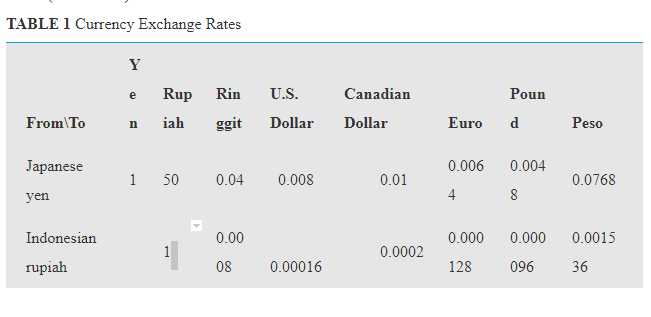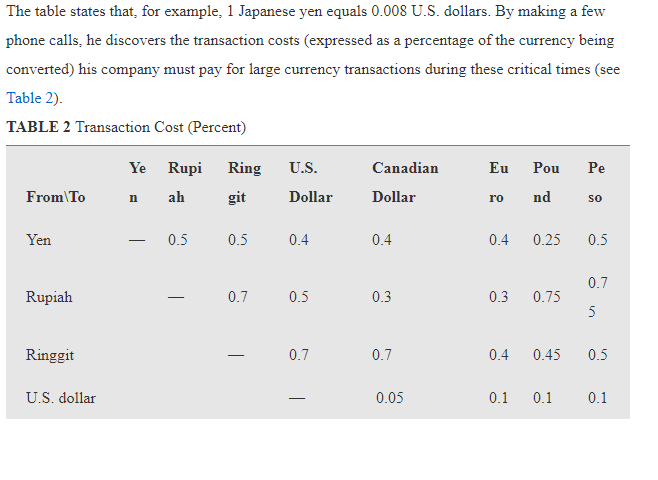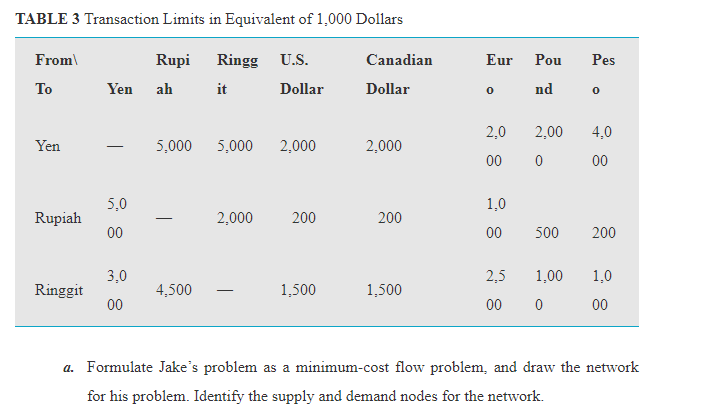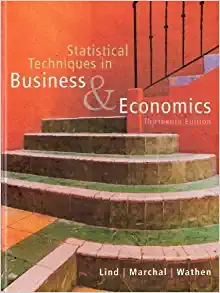Question
Case 6-2 Money in Motion Jake Nguyen runs a nervous hand through his once finely combed hair. He loosens his once perfectly knotted silk tie.
Case 6-2 Money in Motion
Jake Nguyen runs a nervous hand through his once finely combed hair. He loosens his once perfectly knotted silk tie. And he rubs his sweaty hands across his once immaculately pressed trousers. Today has certainly not been a good day. Over the past few months, Jake had heard whispers circulating from Wall Street?whispers from the lips of investment bankers and stockbrokers famous for their outspokenness. They had whispered about a coming Japanese economic collapse?whispered because they had believed that publicly vocalizing their fears would hasten the collapse. And, today, their very fears have come true. Jake and his colleagues gather around a small television dedicated exclusively to the Bloomberg channel. Jake stares in disbelief as he listens to the horrors taking place in the Japanese market. And the Japanese market is taking the financial markets in all other East Asian countries with it on its tailspin. He goes numb. As manager of Asian foreign investment for Grant Hill Associates, a small West Coast investment boutique specializing in currency trading, Jake bears personal responsibility for any negative impacts of the collapse. And Grant Hill Associates will experience negative impacts. Jake had not heeded the whispered warnings of a Japanese collapse. Instead, he had greatly increased the stake Grant Hill Associates held in the Japanese market. Because the Japanese market had performed better than expected over the past year, Jake had increased investments in Japan from $2.5 million to $15 million only one month ago. At that time, one dollar was worth 80 yen. No longer. Jake realizes that today's devaluation of the yen means that one dollar is worth 125 yen. He will be able to liquidate these investments without any loss in yen, but now the dollar loss when converting back into U.S. currency would be huge. He takes a deep breath, closes his eyes, and mentally prepares himself for serious damage control. Jake's meditation is interrupted by a booming voice calling for him from a large, corner office. Grant Hill, the president of Grant Hill Associates, yells, "Nguyen, get the hell in here!" Jake jumps and looks reluctantly toward the corner office hiding the furious Grant Hill. He smooths his hair, tightens his tie, and walks briskly into the office. Grant Hill meets Jake's eyes upon his entrance and continues yelling, "I don't want one word out of you, Nguyen! No excuses; just fix this debacle! Get all of our money out of Japan! My gut tells me this is only the beginning! Get the money into safe U.S. bonds! NOW! And don't forget to get our cash positions out of Indonesia and Malaysia ASAP with it!" Jake has enough common sense to say nothing. He nods his head, turns on his heels, and practically runs out of the office. Safely back at his desk, Jake begins formulating a plan to move the investments out of Japan, Indonesia, and Malaysia. His experiences investing in foreign markets have taught him that when playing with millions of dollars, how he gets money out of a foreign market is almost as important as when he gets money out of the market. The banking partners of Grant Hill Associates charge different transaction fees for converting one currency into another one and wiring large sums of money around the globe.
And now, to make matters worse, the governments in East Asia have imposed very tight limits on the amount of money an individual or a company can exchange from the domestic currency into a particular foreign currency and withdraw it from the country. The goal of this dramatic measure is to reduce the outflow of foreign investments out of those countries to prevent a complete collapse of the economies in the region. Because of Grant Hill Associates' cash holdings of 10.5 billion Indonesian rupiahs and 28 million Malaysian ringgits, along with the holdings in yen, it is not clear how these holdings should be converted back into dollars. Jake wants to find the most cost-effective method to convert these holdings into dollars. On his company's website, he always can find on-the-minute exchange rates for most currencies in the world (see Table 1).





Step by Step Solution
There are 3 Steps involved in it
Step: 1

Get Instant Access to Expert-Tailored Solutions
See step-by-step solutions with expert insights and AI powered tools for academic success
Step: 2

Step: 3

Ace Your Homework with AI
Get the answers you need in no time with our AI-driven, step-by-step assistance
Get Started


